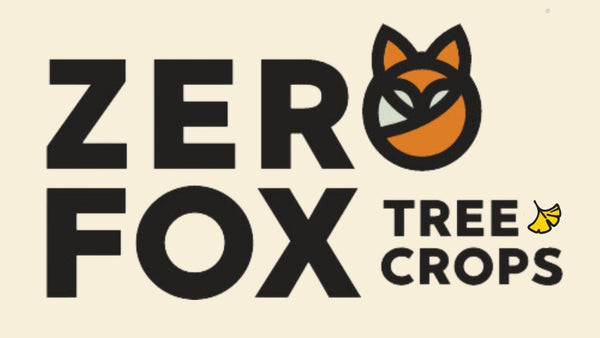Growing Plants Beyond Their Zone
Everyone who has started down the path of perennial gardening and forest farming is well aware of their plant hardiness zone. The natural inclination of the perennial enthusiast is to make a wish list of plants that fall just outside the reach of being acceptable to your plant hardiness zone rating, but is that zone 5 chestnut really out of reach if you live in a zone 4?

Will this plant grow in my zone
One of the most common questions we get for any plant is if this will work in my growing zone. Unfortunately the answer is rarely definitive and usually falls into the category of ‘it depends.’ There are a whole host of environmental factors that affect that answer of plant hardiness including creating micro-sites, windbreaks, heat islands, earth works, soil moisture content and on and on, but the most important factor is genetics. Plants span a range of environments and create adaptations in their gene pool that will allow them to push the boundaries of their historical context. It probably isn’t worth planting a pecan seed from Alabama in Canada but it’s definitely worth planting a pecan seed from southern Ontario in parts of British Columbia. Environmental context is genetic possibility. We like to think of the genetic possibility mechanism in the terms of population dynamics.

Agents of Evolution
Population dynamics and genetic adaptability in longer lived plants results in the slow movement of germplasm to the edges of what is possible. We can speed up this process by moving plants out of their native range and attempting to grow them in conditions that push their zone to the edge of whats possible and thus the process of natural selection takes over. As growers we end up learning lessons to never try that variety again or stumbling upon the anomalous survivor that redefines what is possible. The ability for a plant to challenge its known zone limitations happens primarily with seedlings. Cultivars and named varieties certainly have their benefits when it comes to yield, disease resistance, and precociousness (time to bearing), but often fall short challenging where they can live in regards to zone hardiness and other limiting environmental factors. That perfect dwarf apple tree that produces delicious fruit after only three years isn’t worth much if it can’t survive the brutal winter of its fourth year. In another example I’d rather plant 5 persimmon seedlings to challenge my zone, hope that 3 survive long enough to produce fruit and then select the best producer of those 3. Meanwhile I’m planting more persimmon seedlings knowing full well that many will be “naturally selected” by a weather event or my hand saw.

Seedlings for Climate Adaptation
There is a growing awareness that the climate we grew up in, and all the food varieties that can grow there, will not be the same climate that our future selves, children and generations beyond will live in. This is an alarming and exciting realization for perennial food growers as the options of plants that are possible to grow in our zone will shift into novel territory. In the BC interior we are already experiencing climate irregularities that make us feel like peaches could become a reliable crop where we live or someone could grow an almond tree here due to the hotter, longer drier summers. I met a farmer last year who had his hickory tree start producing nuts after showing nothing for 15 years. Conversely areas that never saw spring or fall flooding and grew plants that rely on this fact now have to contend with regular seasonal weather anomalies that are taking out heritage trees and all of our best laid plant plants. Climate adaptability in perennial crops comes from dynamic germplasm (seedlings) reproducing in edge populations.

Anyone Can be a breeder
Put more simply, the attempts of planting chance seedlings coming from parent stock living on their zone’s edge is how plants move around. That’s where you come in. Finding adaptive plant solutions for food security, fuel production, building materials and much more depends on people challenging what is possible. Often the result is failure but if only a few specimens make it to reproductive age in a changing environment that feels like a moving target then we have a starting point for hope. “So you’re saying there’s a chance!” We all have a role to play and seeing ourselves as part of a solution is the best way to promote people to take action. Often this depends on the limiting factor of space and the frustrating factor of patience. If you only have a small space to plant you probably want that perfect tree, just don’t count on it to stand the test of time. Patience is required to wait for the perennial pace of revealing what works. The citizen plant breeder accepts many failures but persists nonetheless. Some of the best advice I’ve gotten from an old man who has been growing trees out of their zone for a long time, “you’ll be surprised by how fast they grow and how fast time goes by.” So just go for it, be the agent of change trying things out beyond their zone. Plant seedlings because of their random chance outcomes. “The creation of a thousand forests is in one acorn,” says Emerson. You will find what you need, but it might be different than what you were looking for.

